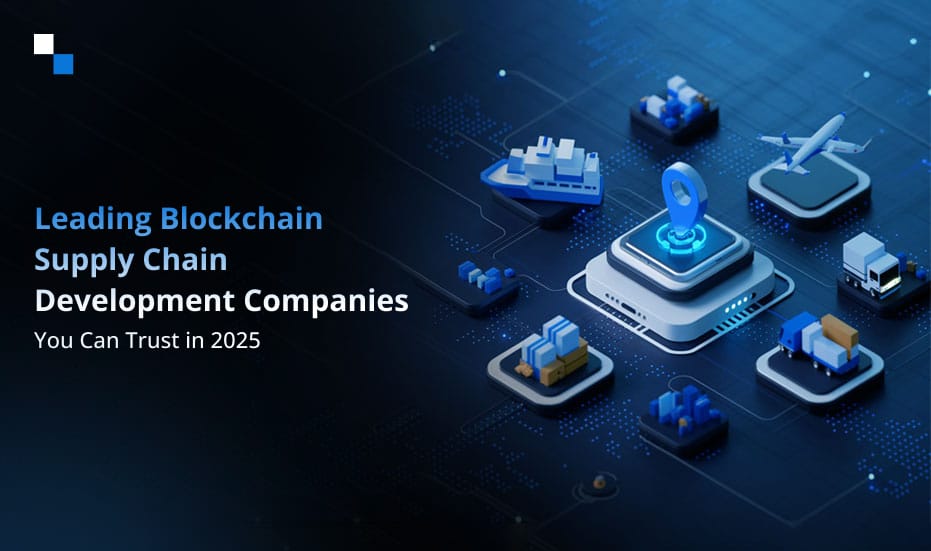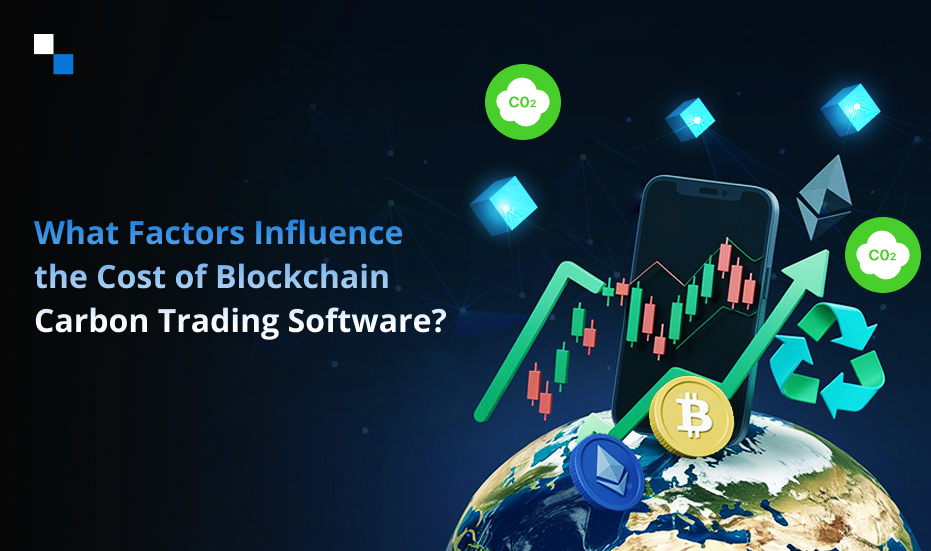
Margin Trading Exchanges Are Printing Profits in 2025 — Will Yours Be Next?
April 9, 2025
Metaverse in Healthcare: Bridging Theory & Practice in Medical Training
April 10, 2025NVIDIA CEO Jensen Huang first introduced the term ‘Physical AI’ at CES in January 2025, and this has gained massive traction among tech enthusiasts. Now, a new evolution has entered the crypto space- DePAI, short for Decentralized Physical AI. The term DePAI was introduced by Messari after the NVIDIA CEO made “Physical AI” a trending topic at CES 2025. Since then, DePAI made waves in the industry, bringing AI, robotics, web3, and DePIN all together. It’s a perfect amalgamation of the most exciting technologies whose combined potential can reshape industries and transform the way the world works.
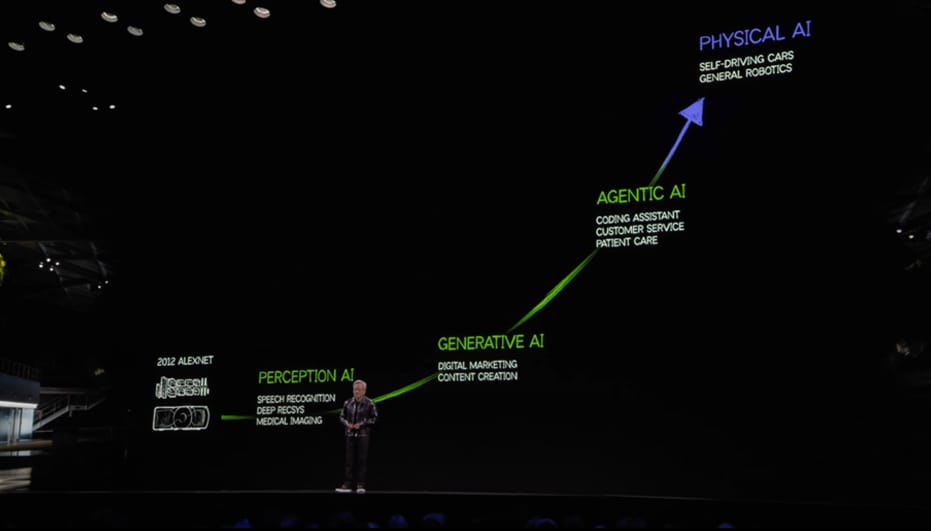
Nvidia CEO Jensen Huang addresses participants at the keynote of CES 2025 in Las Vegas, Nevada, on January 6, 2025.
But why should one care about this newly introduced term? What exact DePAI? How can it become one of the key drivers of the global economy? Why is it being talked about as a game-changer? This blog has all the answers you’re looking for.
Let’s find out!
From Prompt-Driven Chatbots to Autonomous Agents
Just a few years ago, AI was mostly about generating content: a chatbot that answered questions, a tool that created images, or a system that helped summarize long documents. Today, we’re witnessing the rise of autonomous agents, AI systems that not only respond to commands but also initiate actions, complete tasks, and adapt to new environments with minimal human input.
Take this evolution as an example:
- Generative AI: You ask for a to-do list, and it gives you one.
- Agentic AI: It detects your schedule, tracks your goals, monitors your productivity trends, and dynamically updates your to-do list while delegating tasks, without being prompted.
This transition from generative AI to agentic AI models is monumental, and major players like NVIDIA are at the forefront of this shift. Watch the video below to see how NVIDIA is leading this proactive AI revolution.
Video URL: https://youtu.be/uhLDHA9skFk
But this leap raises a critical question: Who owns these powerful agents?
The Centralization Problem in Physical AI
As AI expands into the real world, questions about ownership, access, and control grow louder. The infrastructure that powers intelligent machines, such as robotic fleets, smart devices, edge servers, and training datasets, is largely centralized. Such systems are owned and operated by a few corporations with access to vast amounts of proprietary data. This centralization limits transparency and puts the fate of the emerging Machine Economy in the hands of a select few.
Hence, there is a need to adopt a solution that can turn the vision of a democratized machine economy into reality, and that solution is DePAI.
What is DePAI?
DePAI refers to the integration of decentralized networks with Physical AI systems, such as robots, drones, and autonomous vehicles, allowing these entities to operate autonomously without centralized control. This approach leverages blockchain technology to coordinate and manage the physical hardware of multiple individual units in a permissionless, trustless, and programmable manner.
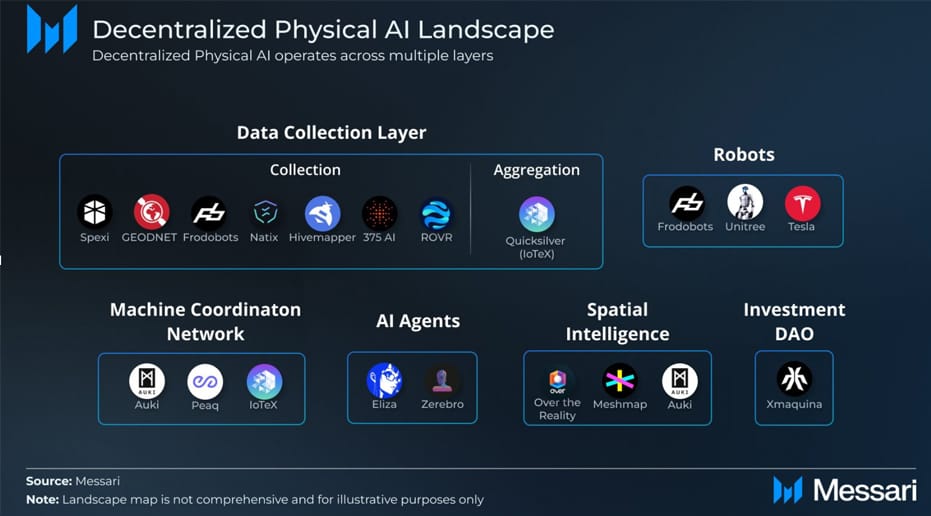
DePAI where:
- Ownership is shared through token-based incentive models.
- Data is crowdsourced and verified from decentralized infrastructure.
- Agents are governed by community protocols rather than corporate policy.
In other words, Decentralized Physical AI agents take the AI out of the black box and put it into a trustless, transparent network, one where humans, not just companies, participate in building, training, and deploying physical intelligence.
The Backbone of DePAI: Why DePIN Matters
To power DePAI, there is a need for more than AI models. There is a need for decentralized infrastructure that connects the digital and physical worlds. This is where DePIN (Decentralized Physical Infrastructure Networks) steps in.
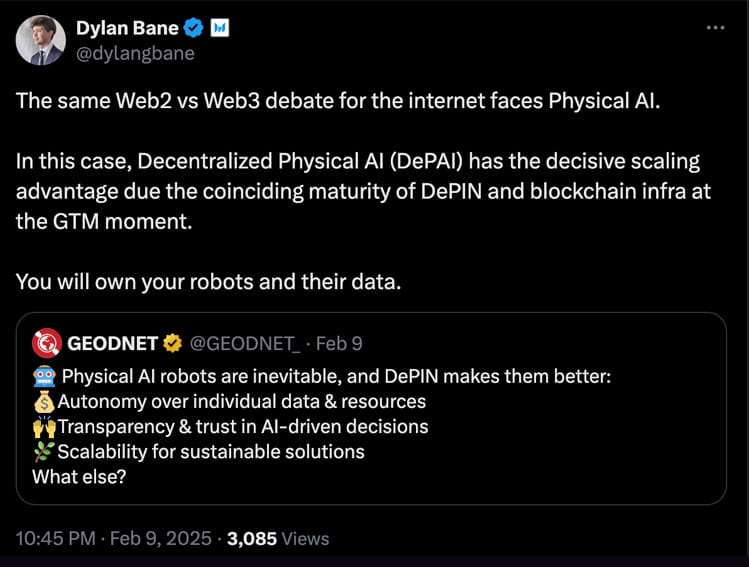
Image Source: Twitter
Think of DePIN as the digital nervous system for DePAI. These networks:
- Provide real-time, geo-spatial data from sensors, satellites, and IoT devices.
- Ensure interoperability across different types of robotic hardware.
- Maintain incentive layers so individuals can earn by contributing data, hardware access, or compute power.
Without DePINs, DePAI cannot scale. Just as the internet needs physical routers and global connectivity, Decentralized Physical AI needs shared infrastructure to operate effectively.
7 Core Layers That Power the DePAI Ecosystem
Building the DePAI ecosystem isn’t as simple as programming a robot and handing it some tokens. It takes a structured, multi-layered ecosystem to bring fully autonomous, decentralized AI machines to life.
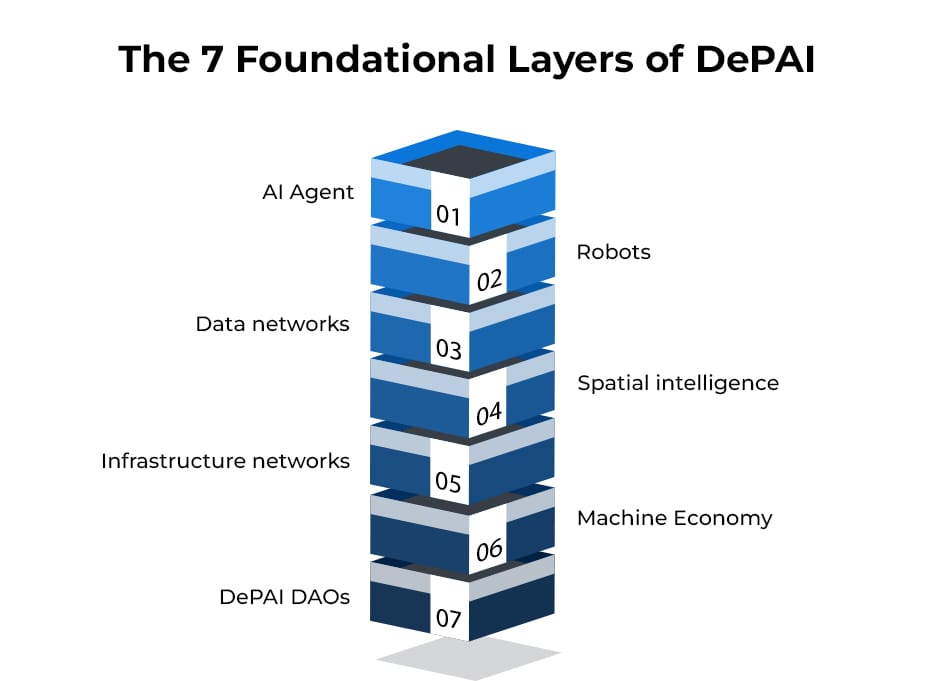
Let’s break down the seven foundational layers that make DePAI possible.
1. AI Agents: The Brain Behind the Bot
At the heart of every Physical AI are Agentic AI models, self-directed intelligence capable of planning, learning, and executing tasks without human oversight. These aren’t just smart assistants, they’re decision-makers. Whether they’re optimizing warehouse logistics or delivering medical supplies, these AI agents act autonomously in real-world scenarios.
Think of them as the “minds” of the Machine Economy that are capable of collaboration, self-improvement, and adapting to dynamic environments.
2. Robots: Giving AI a Body
Brains need bodies, and in the world of DePAI, that body is a robot. This hardware layer brings the software into physical action, turning AI intent into real-world impact. From autonomous drones and self-driving vehicles to humanoid machines and industrial bots, these are the tools that interact with our environment.
This layer is where digital intelligence meets mechanical strength. It’s what transforms software into service.
3. Decentralized Data Streams: Feeding the AI Mind
AI can’t think without data, and in DePAI or Decentralized Physical AI, data doesn’t flow from centralized servers. It is gathered, verified, and distributed via decentralized data networks. These systems continuously provide real-world, real-time information for AI agents to analyze and act on.
Whether it’s environmental sensors, location data, user feedback, or traffic analytics, decentralized data ensures no single entity controls the truth.
4. Spatial Intelligence: Helping AI Understand the World Around It
Robots can’t operate blindly. They need a digital sense of space, a kind of map that helps them navigate, react, and interact with their environment. This is where spatial intelligence comes in.
This layer creates a virtual replica of the physical world that AI agents use to plan movements, avoid obstacles, or collaborate with other machines. It’s the bridge between perception and action in the physical domain.
5. Infrastructure Networks: Powering the Ecosystem
To run a decentralized AI ecosystem, there is a need for a decentralized infrastructure that provides computing power, energy, storage, bandwidth, and more. These are the backbones of DePAI, which ensure machines stay online, connected, and operational.
Whether it’s edge computing nodes, decentralized cloud storage, or peer-powered energy grids, this infrastructure ensures DePAI systems remain resilient, scalable, and global.
6. The Machine Economy: A New Layer of Digital Commerce
Here’s where it all comes together- the Machine Economy layer. This is the economic and protocol layer where machines transact, coordinate, and govern themselves. This layer is built on blockchain and introduces identity systems for machines, interoperability standards, smart contract protocols, and incentive models.
Robots can now own wallets, sign contracts, and get paid for their services, all autonomously, all on-chain. This economy enables machines to operate like autonomous economic agents, engaging in a global marketplace of services and data.
7. DePAI DAOs: Making Ownership Universal
Not everyone can afford a robot, but with DePAI DAOs (Decentralized Autonomous Organizations), anyone can own a stake in the Machine Economy. These DAOs allow people to co-own AI-powered machines, fund robotic deployments, and earn revenue from real-world automation.
Whether you’re an individual, a community, or a startup, DePAI DAOs level the playing field. They introduce transparent, tokenized models for governance and revenue sharing, ensuring that the rise of intelligent machines benefits all, not just the elite.

Why These Seven Layers Matter
Each of these layers serves a distinct yet interconnected purpose. Together, they unlock the full potential of Decentralized Physical AI Agents:
- Autonomy: Machines operate without centralized control.
- Transparency: Every interaction and transaction is on-chain.
- Inclusivity: Ownership and profits are open to all.
- Scalability: New machines and applications can plug into the ecosystem.
- Resilience: Systems are distributed, secure, and censorship-resistant.
The DePAI stack is more than a tech framework as it decentralizes power, automates labor, and builds a shared future between humans and machines.
Final Thoughts
DePAI is another chapter in the world of AI that doesn’t revolve around replacing humans, but it’s about augmenting society with intelligent, fair, and transparent automation. By distributing data, computing, ownership, and intelligence, this technology moves us toward a future where machines serve us all, not just the top 1%.
If you’re a developer, investor, builder, or just a curious mind, now is the time to dive into the world of DePAI crypto. The infrastructure is being laid. The protocols are maturing. And the robots? They’re ready to roll.
As the AI wave reshapes industries, Antier is helping businesses to join this revolution, delivering future-ready solutions like Generative AI, DePIN AI agents, and more. Our vision goes beyond development; we aim to empower enterprises to match the velocity of technological change and carve their space in the AI-driven world that’s evolving by the hour.

